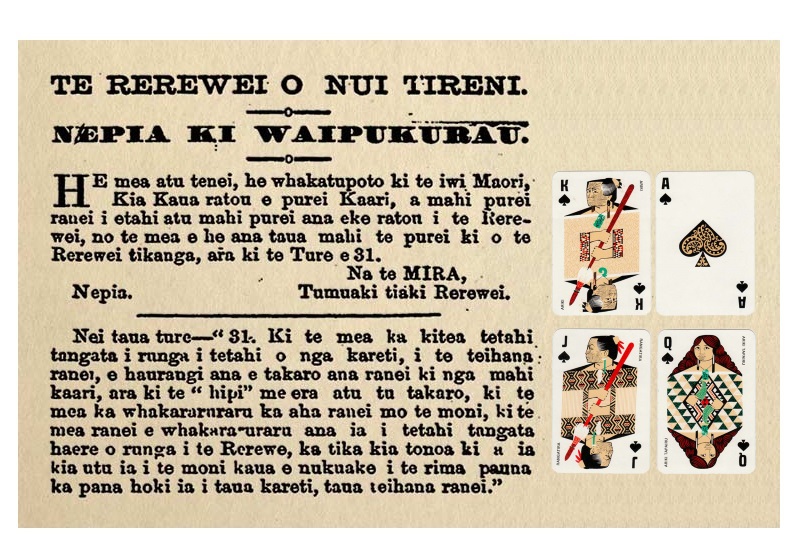
Waipukurau is the largest town in the Central Hawke’s Bay District on the east coast of the North Island of New Zealand. It’s my home town. In a notice in a 1878 issue of the Māori-language newspaper ‘Te Wānanga’ – passengers were warned against playing cards on the Napier–Waipukurau line, reminding them that it was illegal under Rule 31 of the Railway regs.
“Kia kaua ratou e purei Kaari ana eke ratou i te Rerewei / You are forbidden to play cards while on Railway property”
The regulation and this public notice suggest that card playing was widespread among both Māori and Pākehā (non-Māori New Zealanders as opposed to a Māori) and that authorities were concerned to limit it, perhaps to avoid disorder and gambling.
Irony of the Regulation
In mid-1908 the North Island main trunk neared its completion and interest in the line from the public, politicians and newspapers grew. The scheduled finishing date was near the end of that year but an event in Auckland in August provided the impetus for an earlier completion.
Out-going POTUS Theodore Roosevelt decided that his newly-built fleet of battleships should make a world tour (to remind Britain and Germany in particular) about the extent of American power and influence. The arrival of the ‘Great White Fleet’ in Auckland would be a huge event for a small country like ours.
A Famous Gamble
The Minister of Public Works, William Hall-Jones wanted to transport his parliamentary colleagues to Auckland for the fleet’s reception. He was philosophical about the reality that his colleagues would have to endure a stage-coach journey between the two rail heads. But the engineer in charge of the work, Frederick Furkert had other ideas. He suggested to the Minister that the entire journey could be completed by rail. The story goes that Hall-Jones wagered One Thousand Pounds if Furkert could complete the line in time. It’s a bet that was to become famous in railway circles.
Changing Times
In another ironic twist, forty-two years after the Public Notice in 1915, New Zealand Rail (NZR) set up its advertising branch adding the railways design studios in 1920. It turned out a variety of advertising materials including playing cards featuring the ‘Northerner‘ (overnight express) and the ‘Silver Fern‘ (daylight railcar) as part of a publicity drive. I wager NZR authorities had completely forgotten the original edict by then. Photo Credit: Te Wananga, 9 Pepuere 1878/ World of Playing Cards
 Our BAM! Card Game
Our BAM! Card Game 
 Post by Gail Penney
Post by Gail Penney



